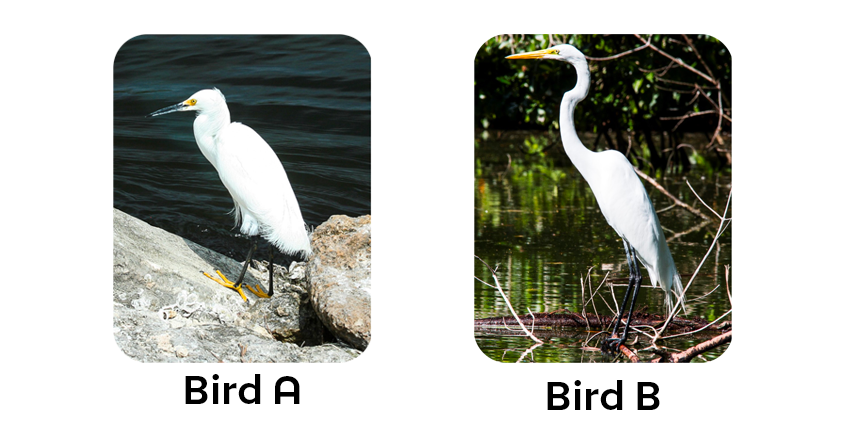
Rose Goldman (center right) points out a bird to Practice of Medicine students (from left) Lynn Hur, Sherry Yang, and Laboni Hoque while birding at Olmsted Park in Boston in May 2021.
How does a first-year medical student learn to distinguish between two likely causes of a patient’s shortness of breath?
By using a method similar to one birders use, believes Rose Goldman, Harvard Medical School associate professor of medicine at Cambridge Health Alliance.
“Finding those differentiating features to get to a medical diagnosis is similar to looking at a bird’s characteristics and behavior to get to an identification,” Goldman said.
Goldman, who has been a physician for 45 years and has enjoyed birding for nearly 20, was so struck by the similarity that she incorporated a brief bird identification lesson into the HMS Practice of Medicine, or POM, course.
The lesson introduces differential diagnosis in clinical decision-making and offers a way for medical students to practice their skills of observation and pattern recognition.
Getting the picture
The idea came to Goldman about six years ago, when she was helping to develop the POM course for the HMS Pathways curriculum—a new flipped-classroom model where first-year students begin learning how to interview and examine patients from the first week of medical school, rather than after a year of science and anatomy courses and labs.
The challenge, Goldman said, was teaching the students how to make a differential diagnosis when they did not yet have an established base of scientific or medical knowledge and were not well versed in the multitude of illnesses that could cause a patient’s symptoms.

She presents the students with photos of two white birds that are found near water and asks them to list the birds’ attributes, such as their comparative size; the shapes and lengths of their necks, legs, and bodies; and the colors of their beaks, eyes, feathers, legs, and feet.
By noticing that the larger bird has a long, curved neck, yellow bill, and black legs and feet, while the smaller bird has a shorter neck, black bill, and black legs with bright yellow feet, the class can then consult a field guide and determine that one is a great egret and the other a snowy egret.
Then, Goldman asks the students to apply similar reasoning to the patient experiencing breathlessness. She said the class considers the symptomatic evidence and which characteristics “point to a pulmonary problem, like asthma, versus a cardiac etiology, like angina or congestive heart failure.”
Pattern of curiosity
Each year, some students express interest in going out into the field, said Goldman. So she added an optional field component that allows them to get out into nature, bond with one another outside of classes and the clinic, and hone their observation skills.
The skills students gain from birding can help them be more present and observant with patients, Goldman said. In the POM course, “We stress the importance of observation—observing our patients visually and listening carefully to their story,” Goldman said.
Birding was a new experience for POM students Laboni Hoque, Lynn Hur, and Sherry Yang. Curiosity about how learning bird identification could apply to learning medicine drew them in.
“I was wondering how [Goldman] was going to connect the two,” said Hoque, who as a first-year student welcomed any extra help in learning clinical skills.
“Finding patterns was something that I didn’t recognize as important until I actually learned more about the clinical side of things,” said Yang. As she has become more observant outdoors, Yang said she has grown more intentional in the clinic about checking for signs of illness and asking patients about their symptoms.





